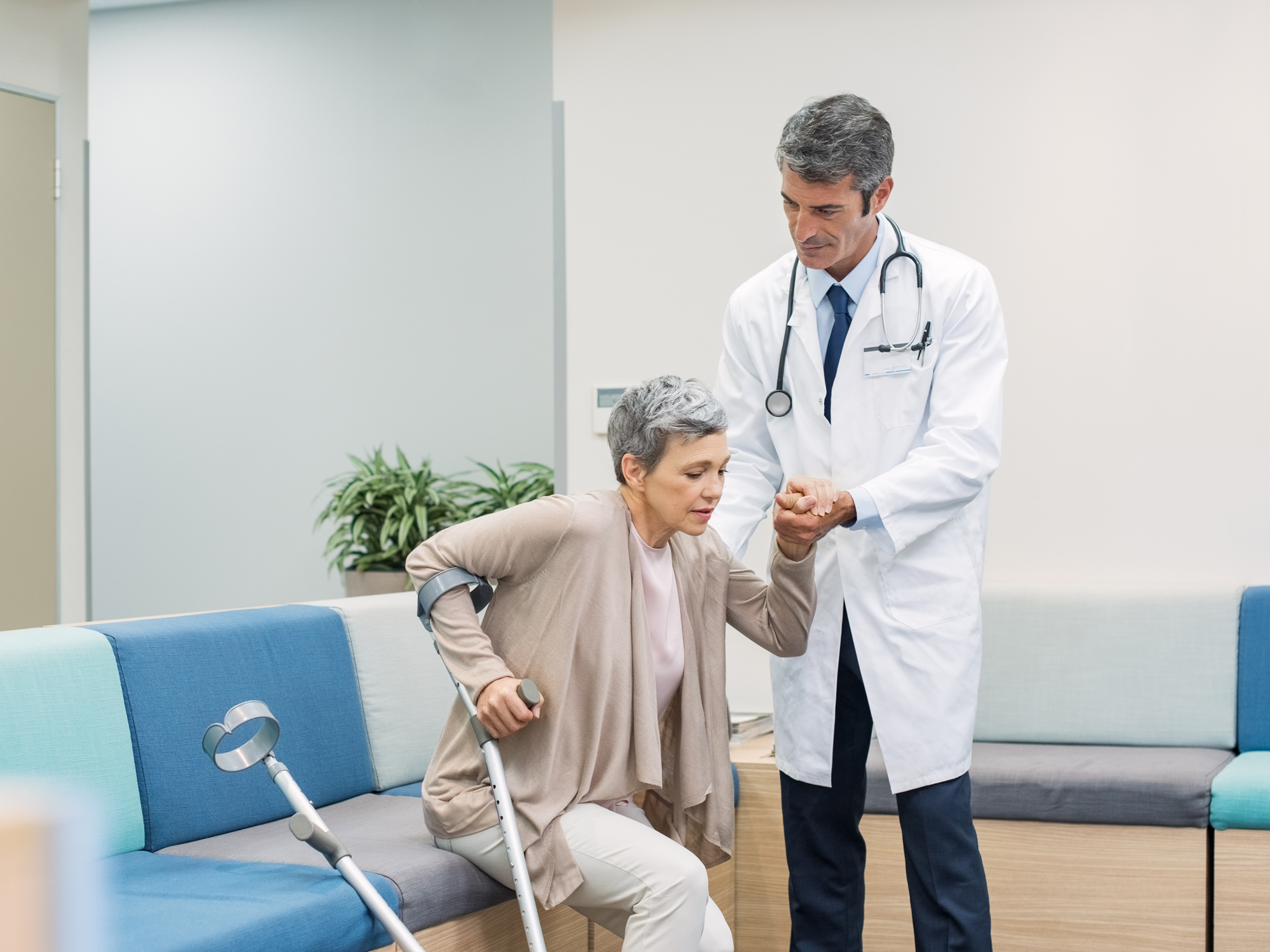Get Easy Health Digest™ in your inbox and don’t miss a thing when you subscribe today. Plus, get the free bonus report, Mother Nature’s Tips, Tricks and Remedies for Cholesterol, Blood Pressure & Blood Sugar as my way of saying welcome to the community!
Are you at risk of a fall? Take the test

If you’re over 50, you’ve probably noticed that you just don’t have the sense of balance that you used to.
In fact, studies show that people past the age of 50 in general can keep their balance for a 15 percent shorter time span than those in their 20s, 30s, and even 40s. And, if you’re over 60, on average your ability to balance could be decreased by 60 percent compared to when you were younger.
This lack of balance doesn’t just add a wobble to your walk that can make you appear older, it also makes it more likely that you will suffer from a fall.
And, if you’re already dealing with osteoporosis, ignoring these balance problems could be setting you up for a fracture, even a painful surgery — or an untimely death…
That’s because women between the ages of 65-69 who break a hip are five times more likely to die within a year than women of the same age who don’t break a hip, according to the research.
How to test your balance
You may have noticed a lack of balance in your everyday activities already.
You may have even asked for help from your doctor. If so, you probably heard the standard line that, “It’s just part of aging” or maybe he put you on bone medication to quell your fears.
But, the truth is there are things you can do to improve your balance that will help prevent falls and take that wobble out of your walk for good.
Testing your balance is easy and requires no equipment and no doctor’s visit.
All you have to do is stand upright. (If you already know you have balance issues, you may want to remain close to a chair or countertop that you can use to steady yourself.)
Slowly bend one knee, lifting it in front of you.
Start a timer, cross your arms over your chest and close your eyes.
Balance for as long as you can.
If you have to uncross your arms, touch your foot to the floor, or bend to the side to keep your balance stop the timer.
Then repeat on the other leg.
After you have performed the test with your eyes closed, repeat on both sides but this time with your eyes open.
The following is average times by age group so you can see how you performed.
Average time with eyes closed
- Age 40-49: 7 seconds
- Age 50-59: 5 seconds
- Age over 60: less than 3 seconds
Average time with eyes open
- Age 40-49: 40 seconds
- Age 50-59: 37 seconds
- Age 60-69: 27 seconds
If you fall below the average time, it’s a good sign that you better start working on your balance immediately. Even if you fall within the average range, you could benefit from balance exercising, shooting for improving your time to that of one of the younger age groups.
Easy balance exercises
Consider adding in an exercise program such as tai-chi or yoga that focuses on balance and also do these easy exercises at home daily and you will see your balance improve over time.
Exercise # 1- Walk the plank
Heel-toe walking is excellent for improving balance. Pretend you are walking on a balance beam and walk forward placing one foot in front of the other with your heel almost touching the toes of the foot behind. Walk at least 10 foot one to two times per day.
Exercise # 2 – Standing leg lifts
Stand with feet about hip-width apart, hands on hips. Keep right foot firmly planted on the floor while you lift your left leg behind you, contracting your glute muscles. Hold for a count of two then swing leg forward, lifting it in front of your body. Hold for a count of two, lower to middle and then lift out to the side. Hold again and then lower. Repeat with your right leg. Alternate sides for a goal of 10 repetitions per-side.
Exercise # 3 – Sidesteps
Face the wall and step sideways with one foot. Then bring the other foot to meet it. Repeat for 10 steps then move to the other side.
Improving your balance helps to prevent falls and fractures, and can even keep you out of a nursing home. Start working on your balance today with the easy exercises above and take the wobble out of your walk.
Editor’s note: There are perfectly safe and natural ways to decrease your risk of blood clots including the 25-cent vitamin, the nutrient that acts as a natural blood thinner and the powerful herb that helps clear plaque. To discover these and other secrets of long-lived hearts, click here for Hushed Up Natural Heart Cures and Common Misconceptions of Popular Heart Treatments!
Sources:
-
Physical Performance Across the Adult Life Span: Correlates With Age and Physical Activity — The Journals of Gerontology, Series A
-
Health test: One-leg balance skill can warn of injury risk — The Oregonian














